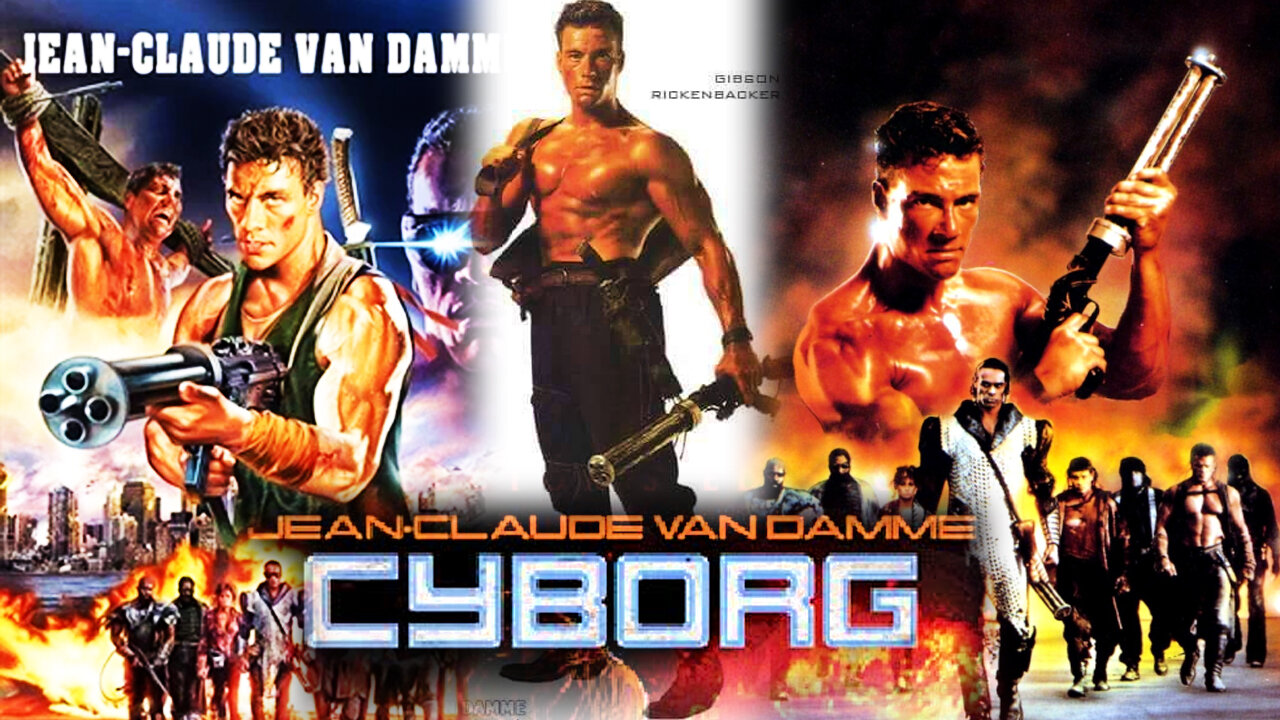Premium Only Content

Cyborg van damme in action
Description and definition
"Cyborg" is not the same thing as bionics, biorobotics, or androids; it applies to an organism that has restored function or, especially, enhanced abilities due to the integration of some artificial component or technology that relies on some sort of feedback, for example: prostheses, artificial organs, implants or, in some cases, wearable technology.[2] Cyborg technologies may enable or support collective intelligence.[3] A related, possibly broader, term is the "augmented human".[2][4][5] While cyborgs are commonly thought of as mammals, including humans, they might also conceivably be any kind of organism.
Placement and distinctions
D. S. Halacy's Cyborg: Evolution of the Superman (1965) featured an introduction which spoke of a "new frontier" that was "not merely space, but more profoundly the relationship between 'inner space' to 'outer space' – a bridge...between mind and matter."[6]
In "A Cyborg Manifesto", Donna Haraway rejects the notion of rigid boundaries between humanity and technology, arguing that, as humans depend on more technology over time, humanity and technology have become too interwoven to draw lines between them. She believes that since we have allowed and created machines and technology to be so advanced, there should be no reason to fear what we have created, and cyborgs should be embraced because they are now part of human identities.[7] However, Haraway has also expressed concern over the contradictions of scientific objectivity and the ethics of technological evolution, and has argued that "There are political consequences to scientific accounts of the world."[8]
Biosocial definition
According to some definitions of the term, the physical attachments that humans have with even the most basic technologies have already made them cyborgs.[9] In a typical example, a human with an artificial cardiac pacemaker or implantable cardioverter-defibrillator would be considered a cyborg, since these devices measure voltage potentials in the body, perform signal processing, and can deliver electrical stimuli, using this synthetic feedback mechanism to keep that person alive. Implants, especially cochlear implants, that combine mechanical modification with any kind of feedback response are also cyborg enhancements. Some theorists[who?] cite such modifications as contact lenses, hearing aids, smartphones,[10] or intraocular lenses as examples of fitting humans with technology to enhance their biological capabilities. Also the emerging mood of implanting microchips inside the body (mainly the hands), to make financiary operations like a contactless payment, or basic tasks like opening a door, can be considered another example.
As cyborgs currently are on the rise, some theorists[who?] argue there is a need to develop new definitions of aging. For instance, a bio-techno-social definition of aging has been suggested.[11]
The term is also used to address human-technology mixtures in the abstract. This includes not only commonly-used pieces of technology such as phones, computers, the Internet, and so on, but also artifacts that may not popularly be considered technology; for example, pen and paper, and speech and language. When augmented with these technologies and connected in communication with people in other times and places, a person becomes capable of much more than they were before. An example is a computer, which gains power by using Internet protocols to connect with other computers. Another example is a social-media bot—either a bot-assisted human or a human-assisted-bot—used to target social media with likes and shares.[12] Cybernetic technologies include highways, pipes, electrical wiring, buildings, electrical plants, libraries, and other infrastructure that people hardly notice, but which are critical parts of the cybernetics that humans work within.
Bruce Sterling, in his Shaper/Mechanist universe, suggested an idea of an alternative cyborg called 'Lobster', which is made not by using internal implants, but by using an external shell (e.g. a powered exoskeleton).[13] Unlike human cyborgs, who appear human externally but are synthetic internally (e.g., the Bishop type in the Alien franchise), Lobster looks inhuman externally but contains a human internally (such as in Elysium and RoboCop). The computer game Deus Ex: Invisible War prominently features cyborgs called Omar, Russian for 'lobster'.
-
 4:31
4:31
CoachTY
15 hours ago $8.95 earnedCOINBASE AND DESCI !!!!
38.6K8 -
 10:02
10:02
MichaelBisping
14 hours agoBISPING: "Was FURY ROBBED?!" | Oleksandr Usyk vs Tyson Fury 2 INSTANT REACTION
2.66K7 -
 8:08
8:08
Guns & Gadgets 2nd Amendment News
2 days ago16 States Join Forces To Sue Firearm Manufacturers Out of Business - 1st Target = GLOCK
55.9K57 -
 10:17
10:17
Dermatologist Dr. Dustin Portela
1 day ago $7.81 earnedOlay Cleansing Melts: Dermatologist's Honest Review
53.6K1 -
 1:02:20
1:02:20
Trumpet Daily
2 days ago $26.68 earnedObama’s Fake World Comes Crashing Down - Trumpet Daily | Dec. 20, 2024
35.1K36 -
 6:29
6:29
BIG NEM
22 hours agoCultivating God Mode: Ancient Taoist NoFap Practices
30.5K6 -
 30:53
30:53
Uncommon Sense In Current Times
1 day ago $7.99 earned"Pardon or Peril? How Biden’s Clemency Actions Could Backfire"
50.6K4 -
 40:01
40:01
CarlCrusher
20 hours agoSkinwalker Encounters in the Haunted Canyons of Magic Mesa - ep 4
52.4K2 -
 59:44
59:44
PMG
1 day ago $5.74 earned"BETRAYAL - Johnson's New Spending Bill EXPANDS COVID Plandemic Powers"
54.9K21 -
 6:48:50
6:48:50
Akademiks
18 hours agoKendrick Lamar and SZA disses Drake and BIG AK? HOLD UP! Diddy, Durk, JayZ update. Travis Hunter RUN
176K30